A Southeast Asian journey while uni is out. Part Four: Ha Long Bay
Ha Long Bay and Eagles

Ha Long Bay is to Vietnam what Stockholm's archipelago is to Sweden. (At least that is the feeling I get).
I find it difficult to describe Ha Long Bay without adding a few anxious highlights that tend in the environmental direction. However given that I am studying conservation ecology please allow me these morbid musings.

Ten thousand people a day in peak season, and five hundred and three operating boats. Boats that are new since my last visit here eleven years ago. In that time Vietnam has had to clean up it's pollution act enormously as Ha Long Bay was, in 1994, given a UNESCO world heritage site listing that was expanded in 2000.
These boats are newer, chew less fuel and emit almost no black fumes, litter bins shaped as plastic penguins holding their beaks open swallow rubbish and many of the floating fishing villages are gone, this partially due to the government funding a child in each fishing family to fully finish education and learn tour touting and hospitality.
But wait ... did i forget to mention the view? That, I am sure, is what you are waiting to hear about.
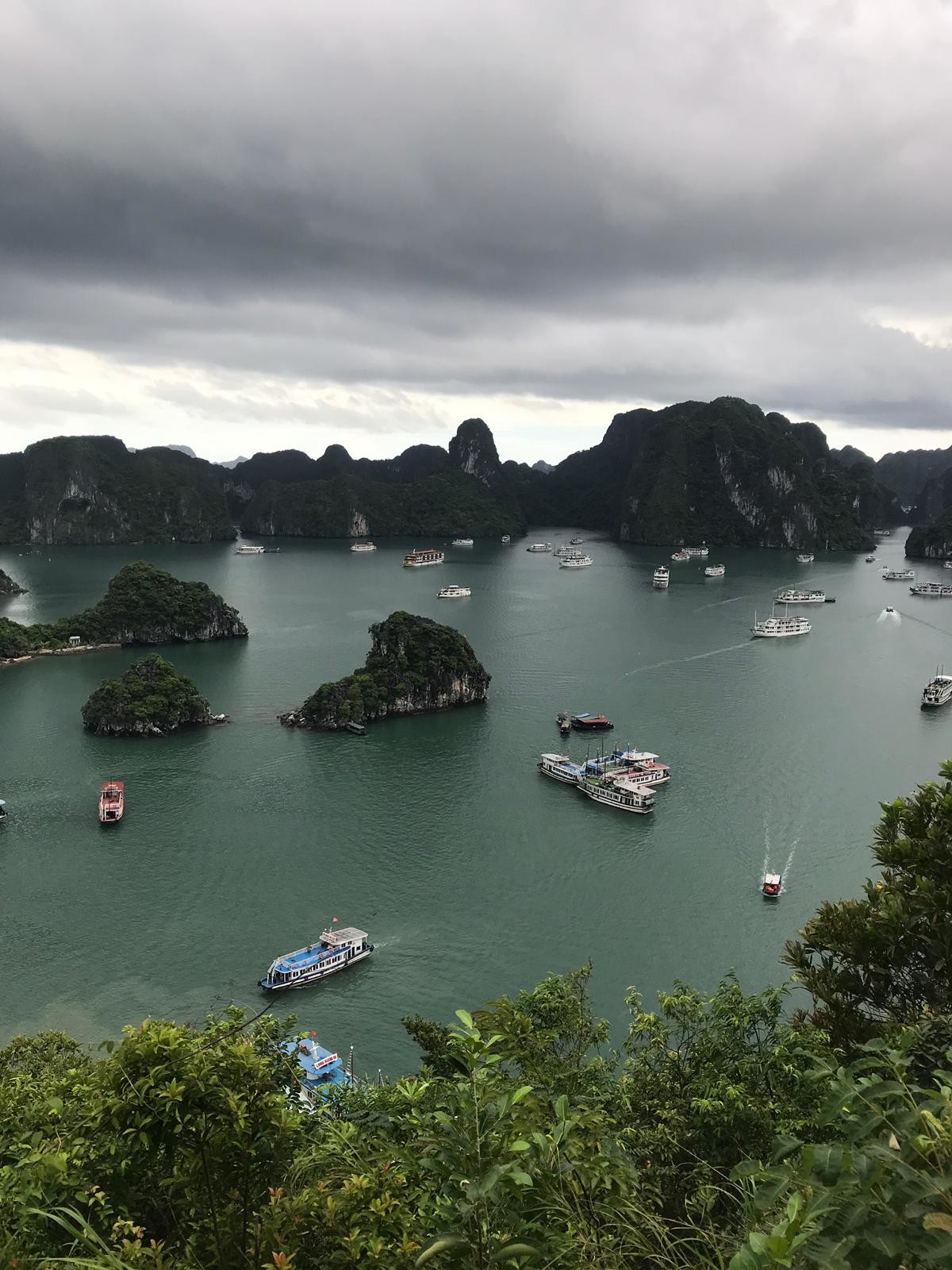
It is one thing trekking through a karst landscape but it is quite another motoring through it on water. 500 million years of formation with 14 endemic floral species and 60 endemic faunal species.

The same tangled vines in luminous green, tall trees clutching at the rock and ... sea eagles!
My heart soared when I spied the first adult gliding over us. He spun and wheeled and flew into towards the karst cliff. As he landed, a juvenile took to the skies followed by another adult.
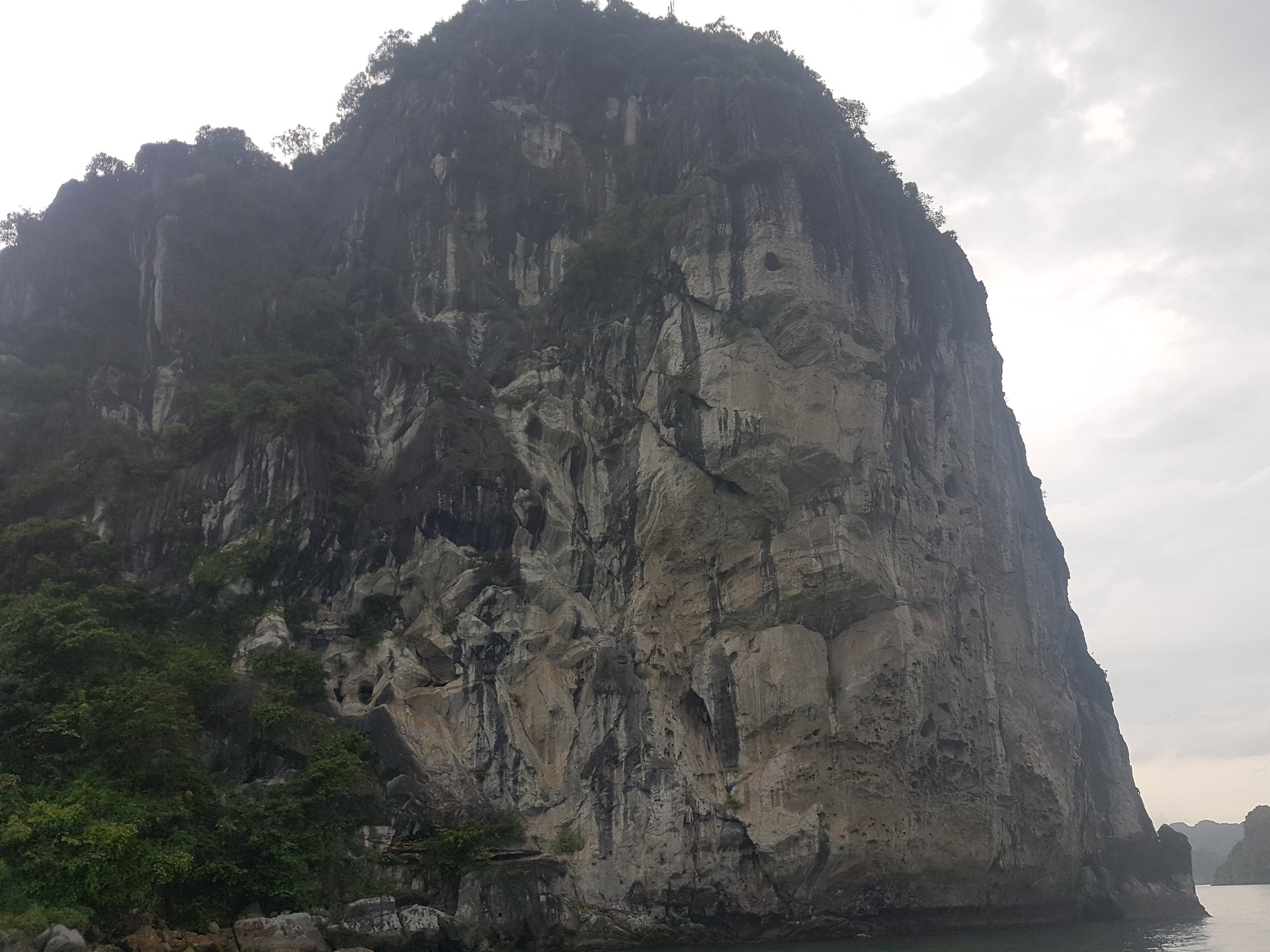
I'm no raptor identification expert, but even to a novice, this was identifiable as a breeding pair and if this pair was breeding, then it had habitat, food and space to do so.
All of the lifeless bay that I imagined beneath our diesel chugging boat suddenly stirred with the inklings of life. The karst massivs rose out of the bay all about us and as I focussed in on the sky around us, more eagles, adult and juvenile appeared. In all I counted over sixteen individuals.
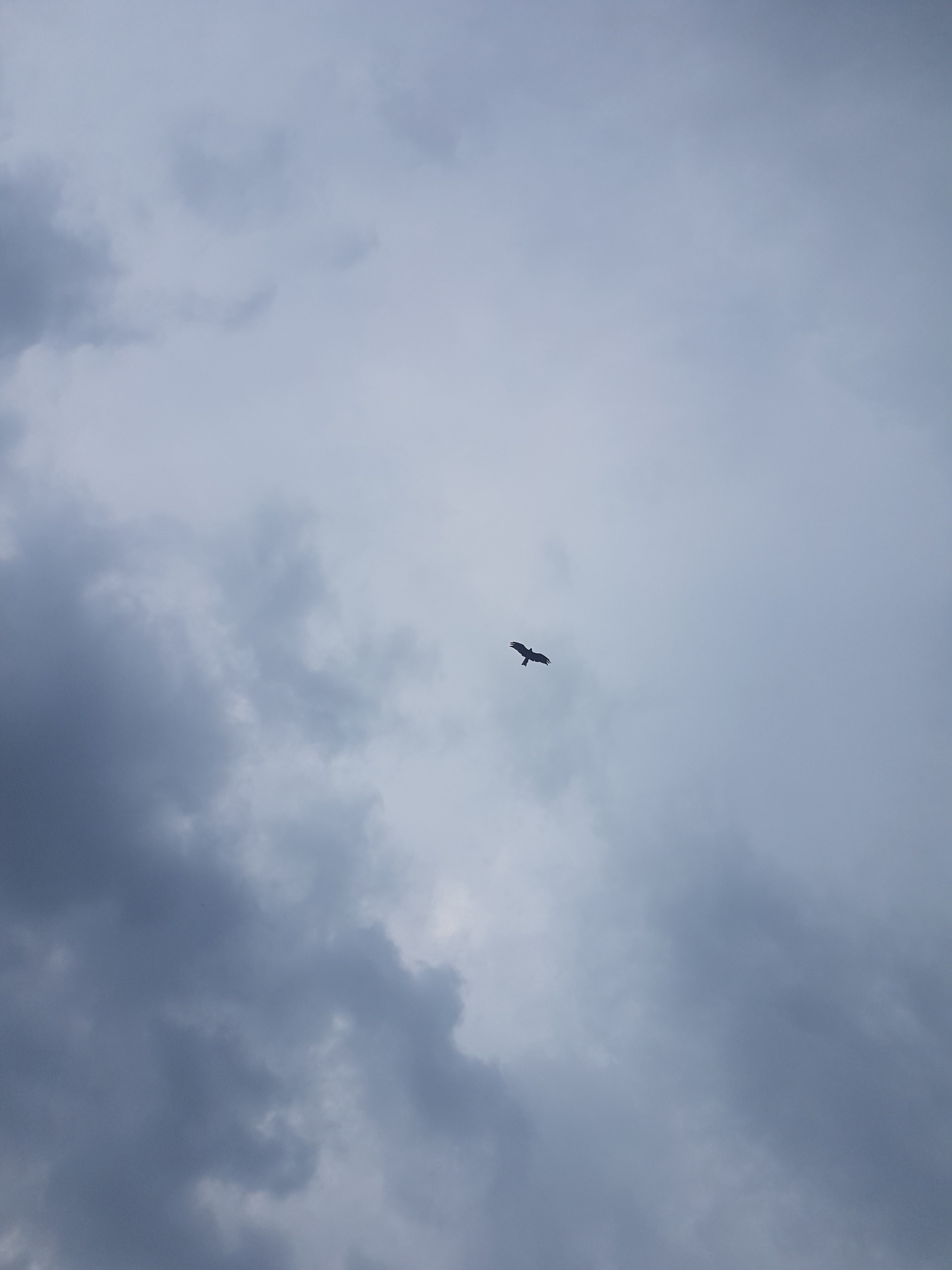
Oh! Joy of joys ... Vietnam had just shown me a living landscape.
Raptors sit at the apex of the food web and are the very measure of a healthy environment, showing functionality, diversity and complex habitat architecture. Preserve them and we preserve our very home and environment.
A rich lunch of prawns, mussels, squid and fish all served with good old fried noodles was straddled by caving and swimming.
But hold on ... let me give you the Halong Bay version of these activities.
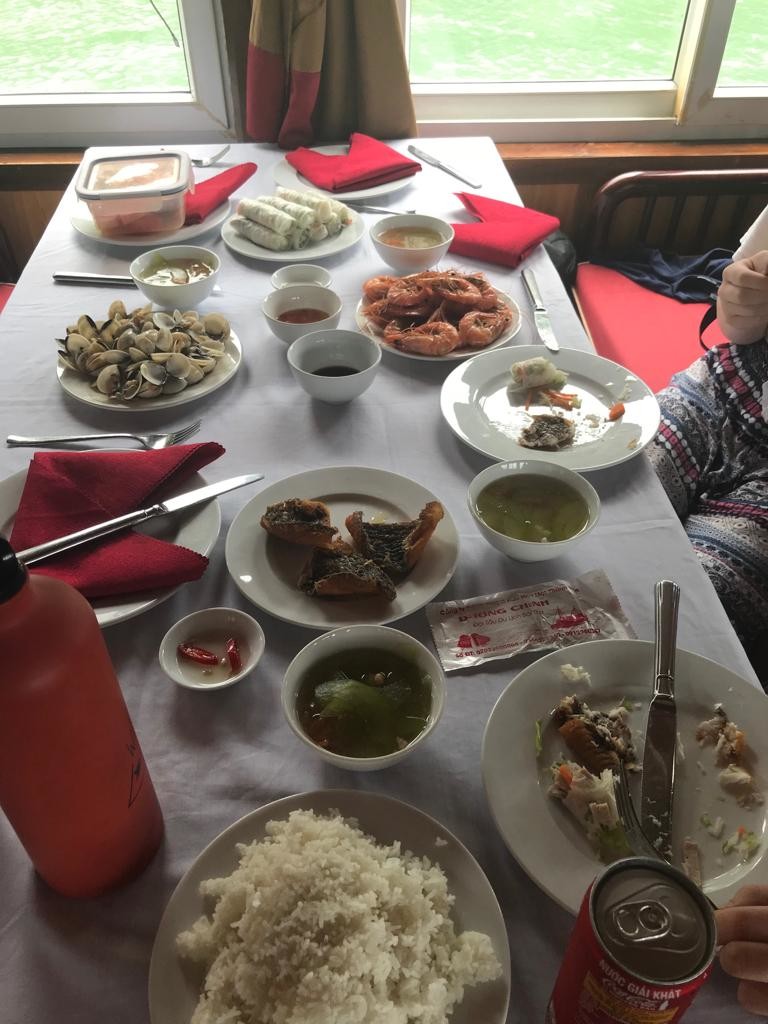
With so many hundreds of boats, parking at the concrete pier to disgorge scantily clad tourists mirrored the traffic chaos of Hanoi. But large barge like boats are a little more difficult to manoeuvre than scooters. Shouting and shunting, horn blowing and engine revving provided the ambient sound as we were rushed off the boat, caving tickets in hand.
Four hundred metres across the water the pickup pier indicated where this karst cave system would allow us into the sunshine again.
One hour, one way, were the unsignposted rules. After four hundred steps up, the signposted rules controlled any other free action we may consider. No smoking. Litter here (open beaked penguin).
A narrow, concreted and roped pathway with identifiable photo and selfie spots, meandered around the most incredible cave system.
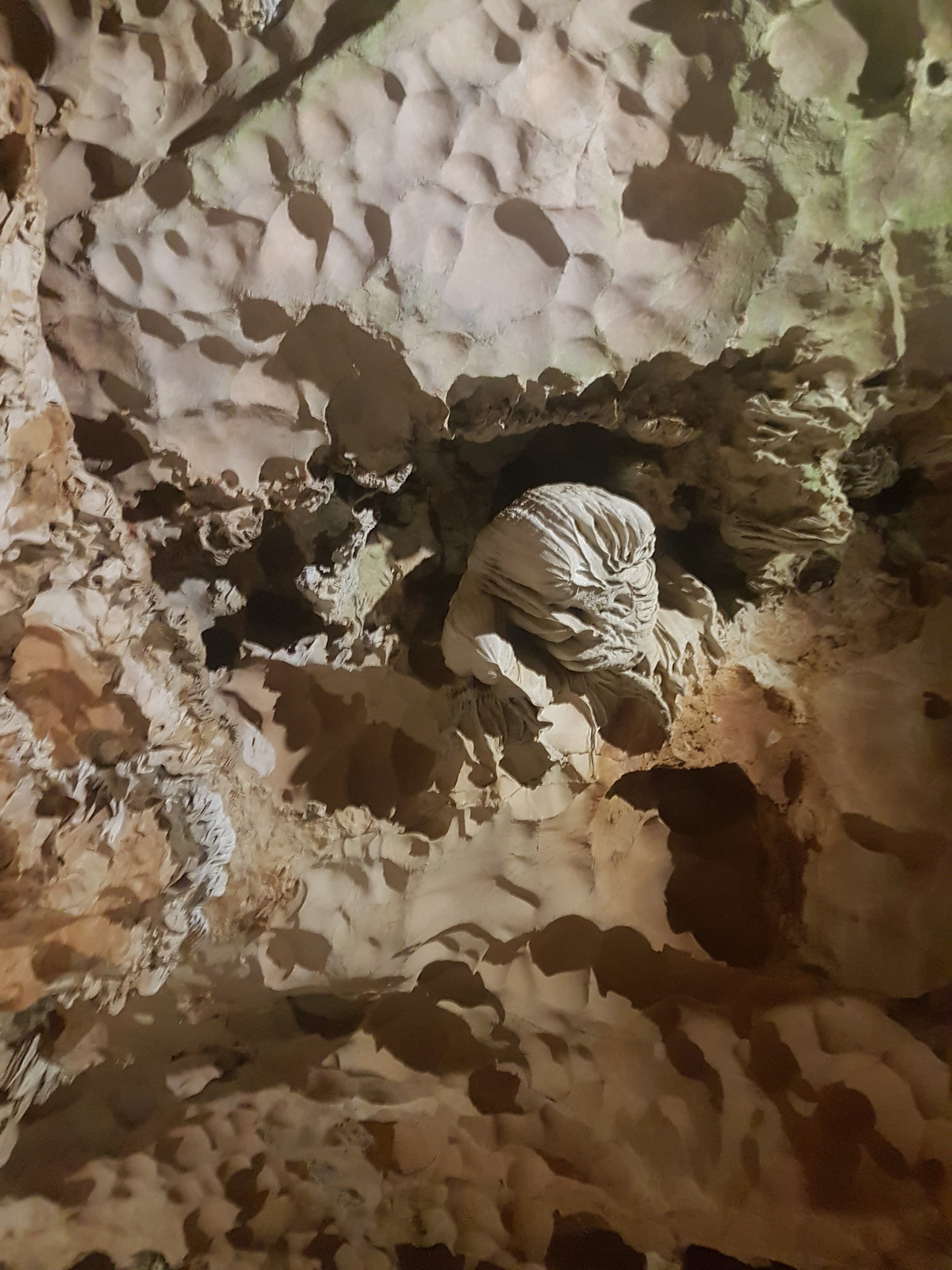
Eleven years ago these caves had been lit with fluorescent lighting of all the colours imaginable, fake fountains spewed water in crazy patterns and we had made the one hour walk tightly packed in a queue of two hundred people.

Now there was only a soft yellow lighting system, the fountains had gone, the concrete structures hacked from the cave walls and floor, the path had been widened and so we were not so tightly packed in the caving queue.
At a comfortable speed we wandered amongst statactites and stalagmites, gazed up at cathedral structured ceilings and bathed in the coolness of the cave air.
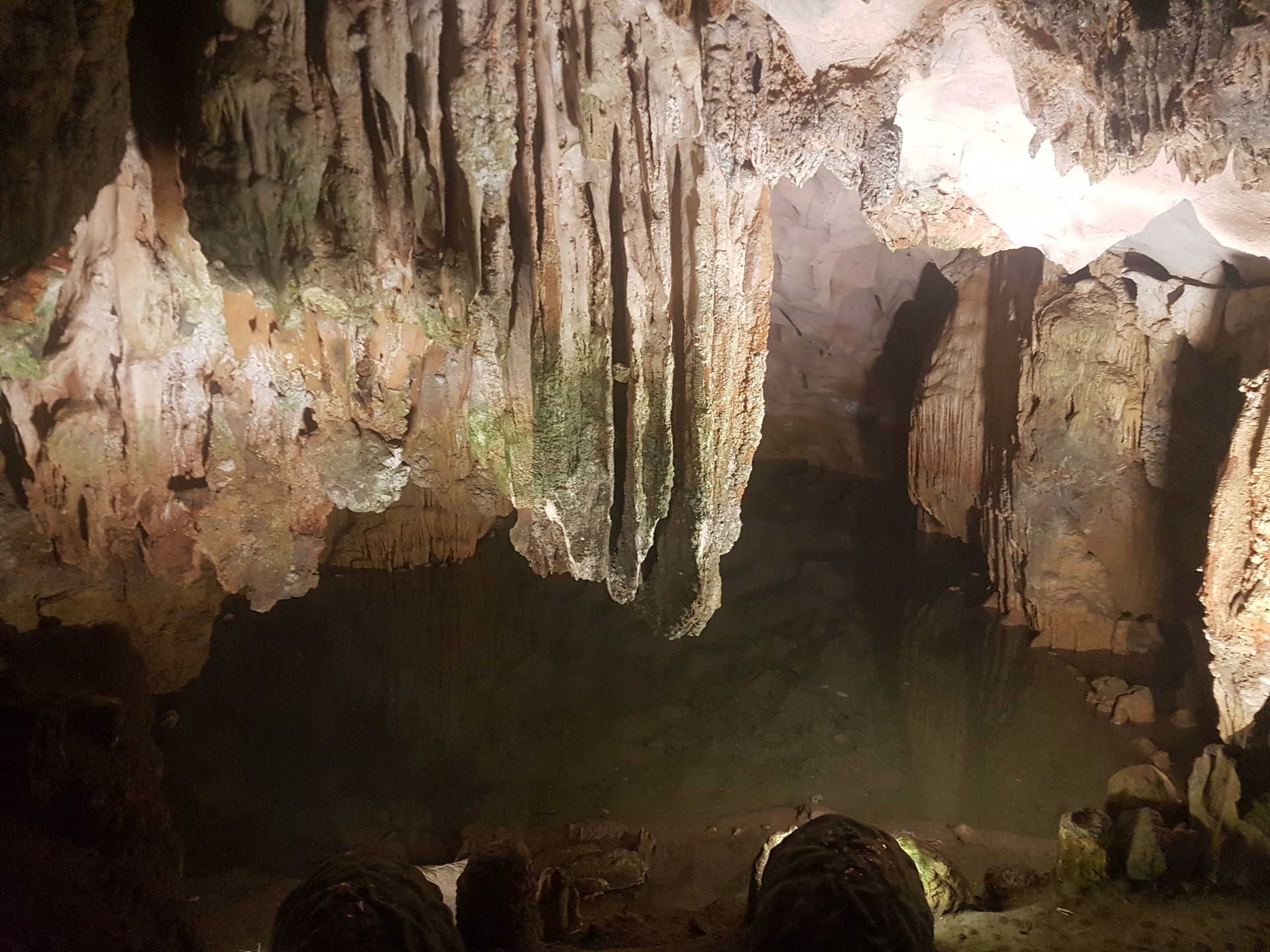
A trail of blood from some poor soul's bleeding nose (we saw her) led us back down the stairs to the chaos of boat pickup.
Which one was ours again? Oh hold on here is the tour leader chivvying us along (we had asked him kindly put away his yellow flag).
"Next stop five minutes at swimming spot" he said.
And there it was. Another traffic jam of boats at a man-made beach at the base of a karst tower. Sunbeds for rent, volleyball net standing and a line of buoys showing swimmers how far they might swim out before risking death by boat ramming.
But we kept our sense of humour as the first few drops of rain fell and the clouds rolled in. The girls braved the exhaust fume contaminated water and I stood watch feeling ridiculous, with throwbag at the ready (expedition leader rules ... we did have two trained life guards in the group).
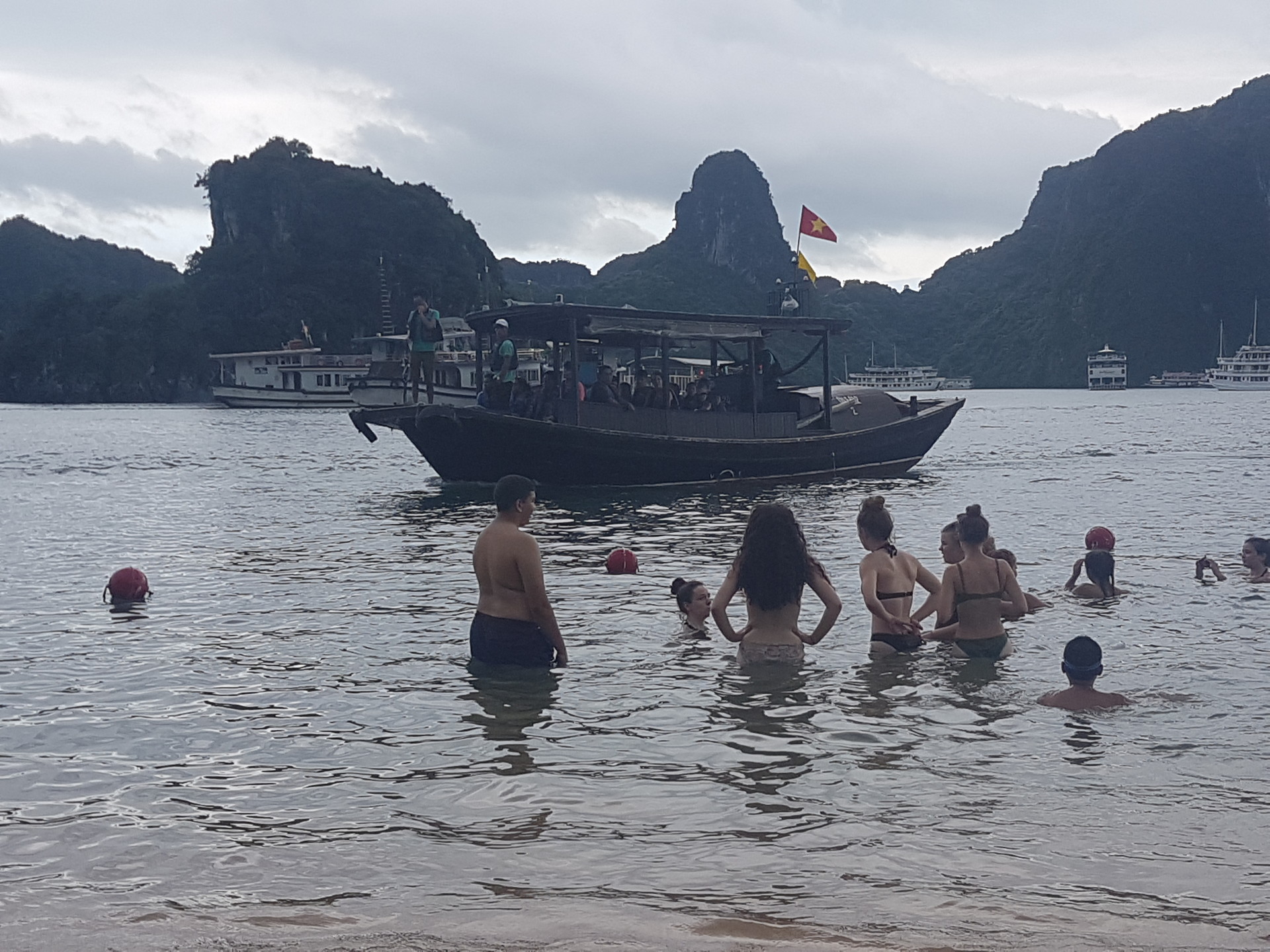
I pause this narrative briefly to catch you up on a game we had been playing, (the two school teachers and I), since our arrival in Hoi An. It involved matching outfits, mostly depicting fruit - bananas, watermelons, pineapples.
The 2019 fashion appeared to require families, couples, siblings, to dress in matching outfits when out and about. The score system was as so (MO=Matching Outfit):
- Two MO's: 1 point / on a scooter: Double points.
- Family MO's: Points per MO / more than 5 add 1 bonus point / on a scooter: Double points.
- Two MO couples holding hands: 8 points.
Our couples deduction as they wondered past our dinner spots, claimed that a functioning relationship had both boy and girl with matching shirts buttoned up and neat.
Love meant tops and bottoms matched.
A slight lovers tiff had one of the pair with the shirt open, undershirt showing. A big argument was announced by one of the pair carrying their shirt over their arm.
I was firmly behind in this game with Jess and Amanda not only staying out later than me every night, but also by their undilutable competitiveness.
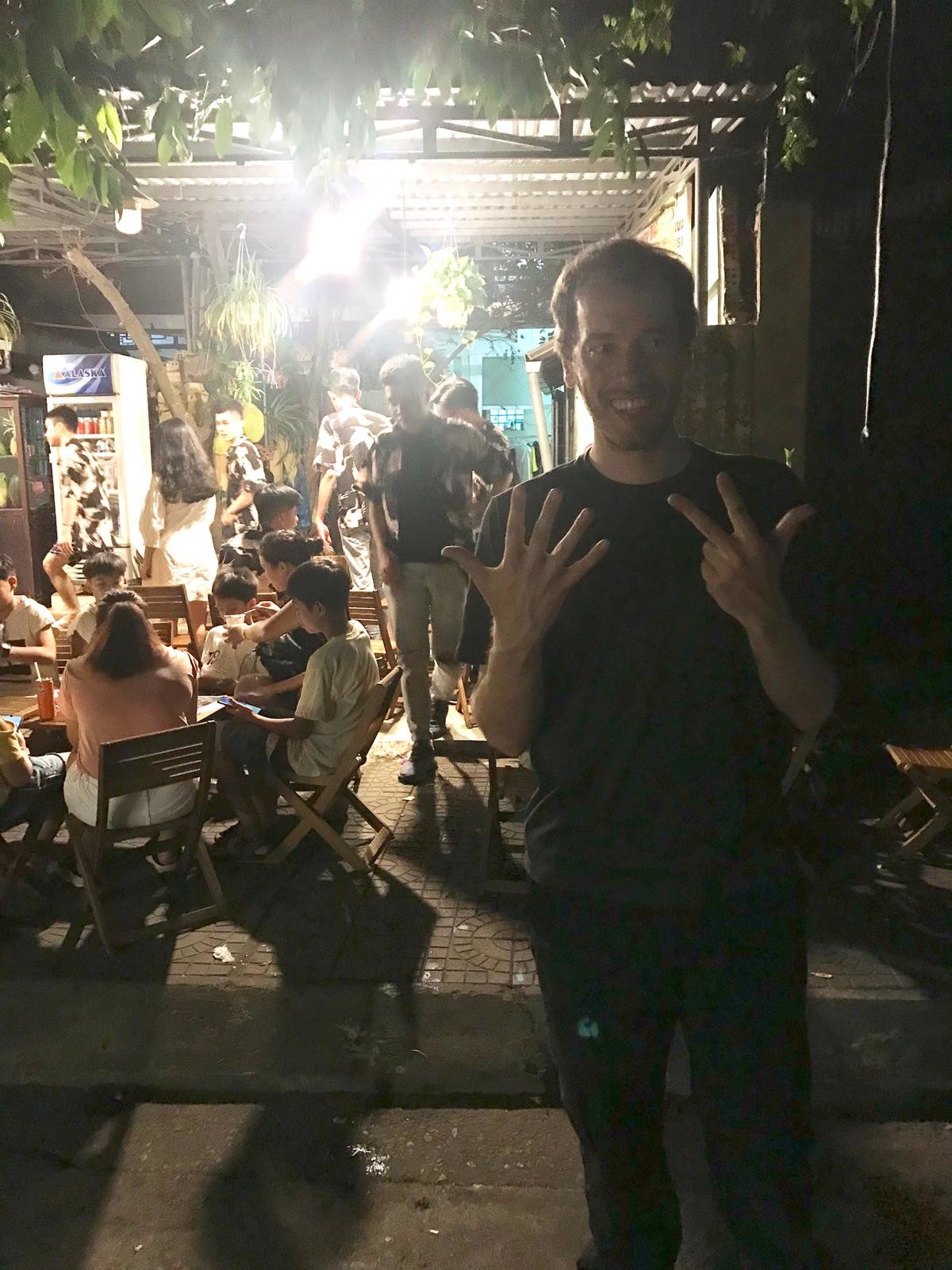
Back to that public swimming beach in Halong Bay and I took the score card away with me. Even doubling my points because not only did I get the Matching Outfits to pose for a group photo, but I got a few of our students to photobomb it too.
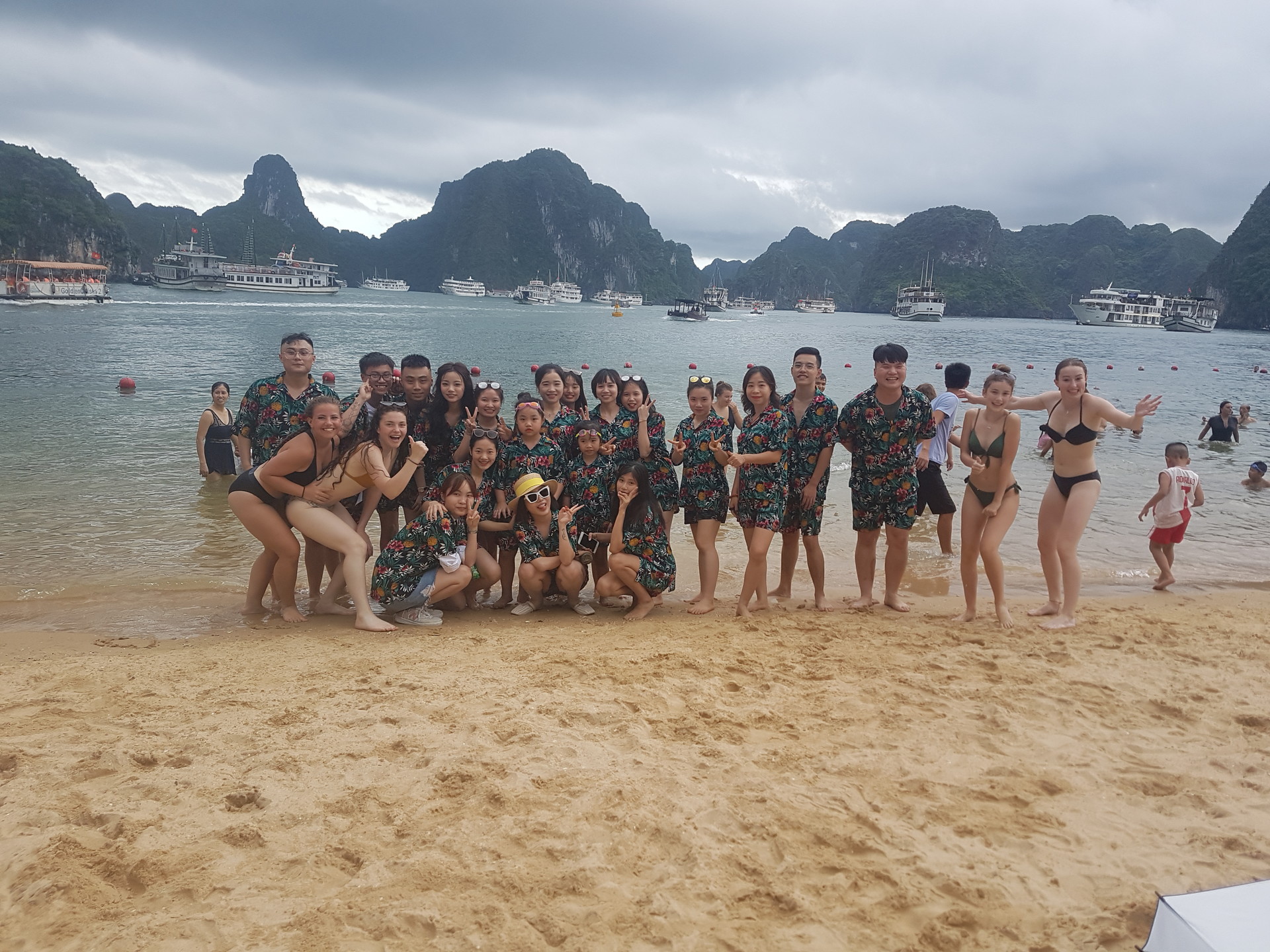
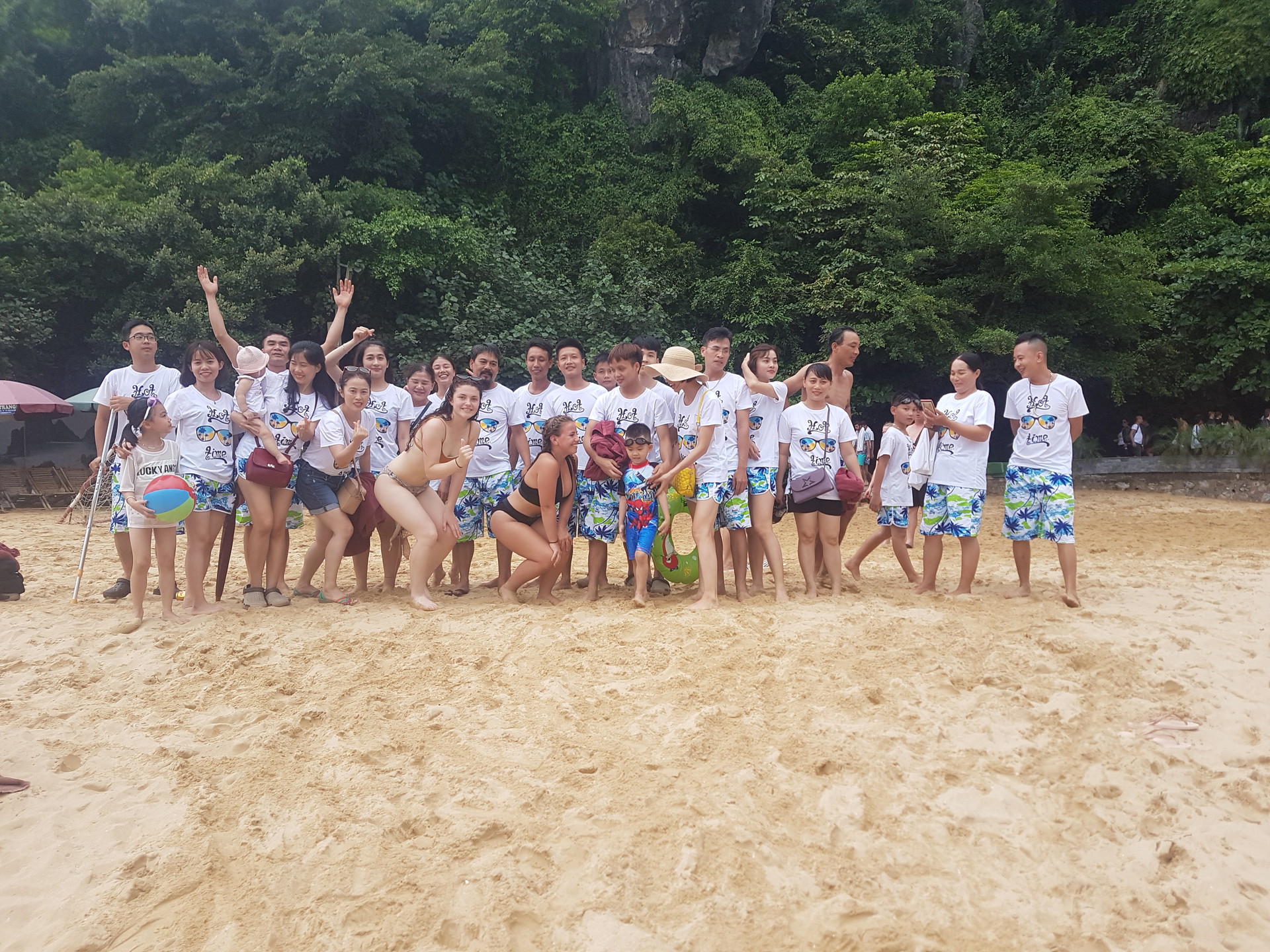
The cruise back into shore was sedate and quiet. Yes quiet! Somehow we managed to shake the other boats and, in peace I could spot raptors and sink deep into this incredible landscape that is indeed worth it's listing as World Heritage site.
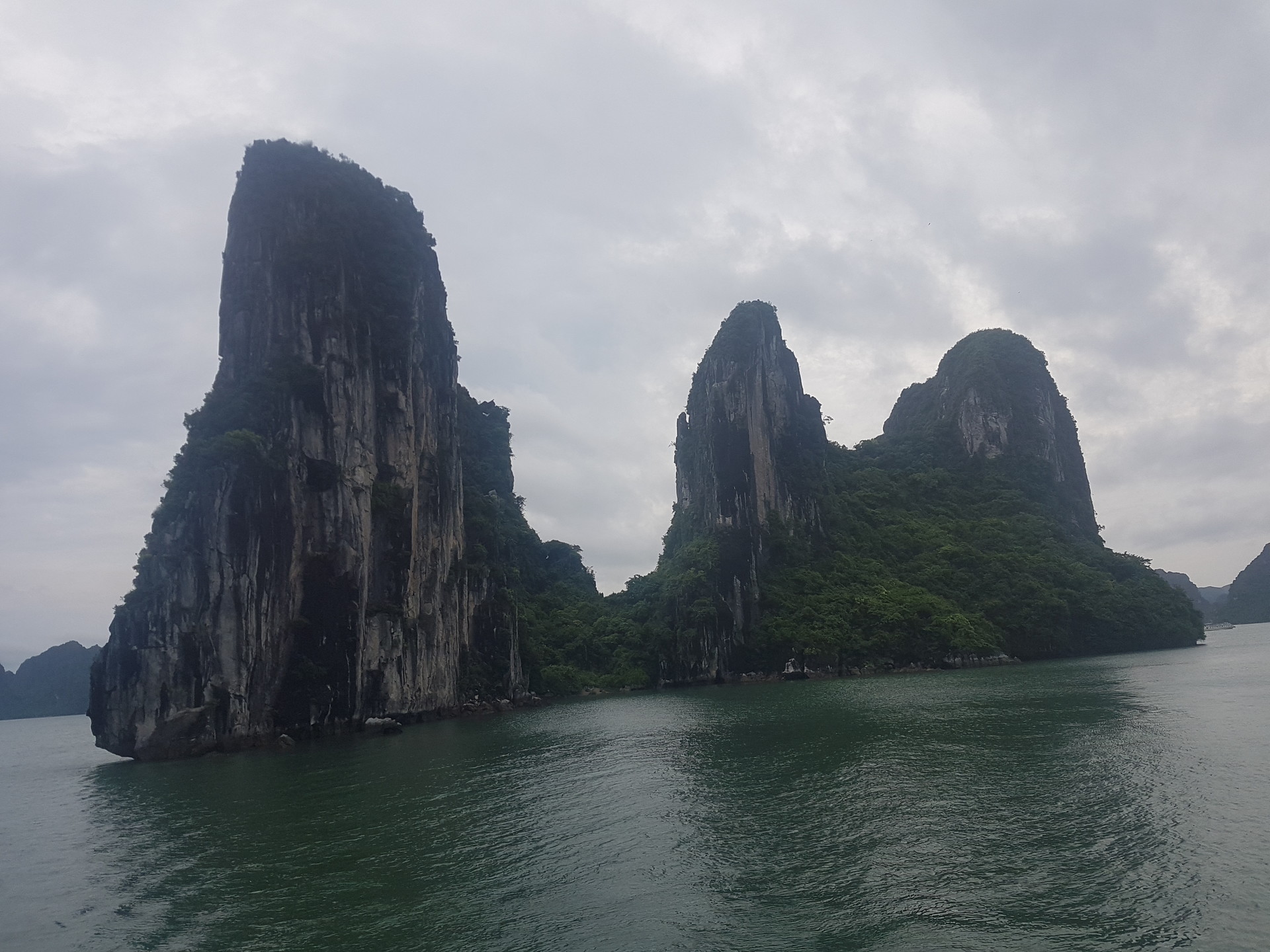
My afternoon of hope crashed when the very next morning, opposite our plush La Paz resort hotel, the Sydney opera house styled marine park, began its morning dolphin, sea-lion and perhaps penguin show. Vietnamese, Filipino, Chinese and Thais who arrived by the coach load and left the arena to sink into silence and inactivity before the more environmentally vocal western tourists began arriving by their coach loads, driving right by the giant concrete structures of gorillas, lions, mountain goats and Snow White and the seven dwarfs, with no idea of the probable cruelty being practiced here daily.
Only the open beaked penguin litter bins knew the stories that lay behind this awful place.
My eco-anxiety was back to haunt me but the sea eagles swooped down on them and made them scuttle for cover.
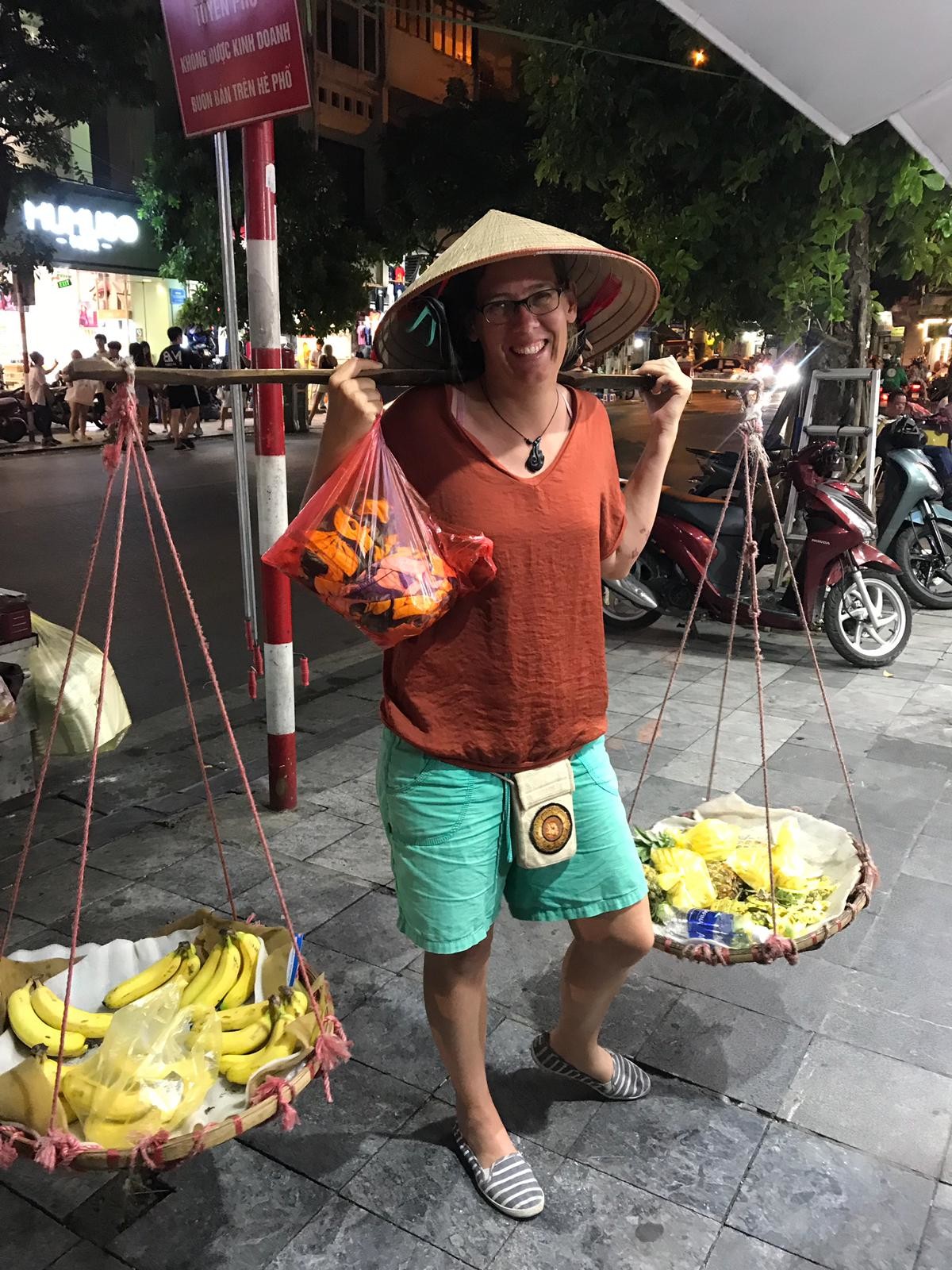
Bringing environmental awareness into your studies at home or as an Erasmus student:
- Take some time to research environmental justice and what it means in your line of study be that medical, engineering, arts, languages, social studies or drama.
- Download the Mongabay app for all environmental news.
- Stop using single use plastic ... for real, not just in words!
- Start shopping in second hand stores for everything...
Photo gallery
Want to have your own Erasmus blog?
If you are experiencing living abroad, you're an avid traveller or want to promote the city where you live... create your own blog and share your adventures!
I want to create my Erasmus blog! →































Comments (1 comments)
It was nice to see some pics of you, my friend!